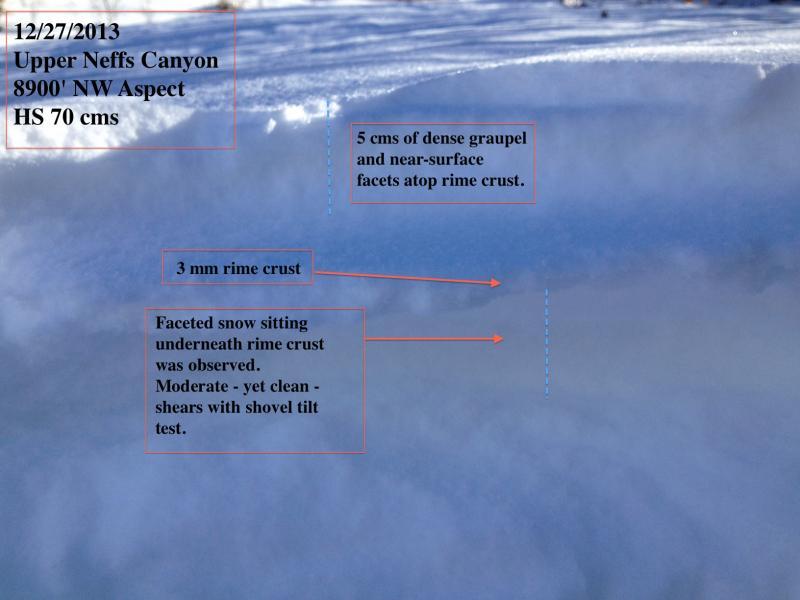I was in mid-BCC on 12/24 and upper LCC on 12/26. Did not submit observations as the situation with our persistent slab seems very well covered in several excellent observations. Overall I was finding results consistent with others in that the dense snow from 12/21 - 12/23 has settled into a very supportable slab providing excellent travel and ski conditions on low angled slopes. I have not been getting any collapsing, or any other red flag signs, and the buried weak layers are seemingly adjusting to the load. Pits on 12/23 and 12/24 were showing full propagation with ECTs however. Classic persistent/deep slab set up where you have to watch slope angles on non-solar aspects. My route today required traveling across a relatively steep (approaching 35 degrees) slope on a NW aspect at about 8900' and I simply turned around at this point.
Today traveled to upper Neffs Canyon - an area I hadn't yet visited this season. Thin snowpack with at most 75 cms up to about 8800' (my high point today.) Few quick pits on NW aspects > 8500' were showing a relatively stable snowpack (despite being so shallow). CT scores with upper 20's with progressive compression fractures in the depth hoar down 65 cms. I also was getting CT8 Q2 down 5 - 10 cms in faceted snow just below the rime crust. Isolating the top 20 cms of snow with a shovel tilt test, I was getting clean shears in this weak layer as well. Up until today I have not been finding faceted snow below the rime crust with quick hand pits. Am unsure if this rime crust simply formed over existing faceted snow, or if facets are starting to develop. (We often see facets form underneath crusts due to the crust forming a vapor barrier.) The presence of the rime and rain crusts vary widely, but are most prominent on the windward NW and W aspects. Am curious if others are now noticing facets underneath the rime crust as well. Obviously not a concern at the present with no slab on top, but it is worth watching.
Avalanche danger was Moderate where I was traveling today, but kept elevations < 9000'.







